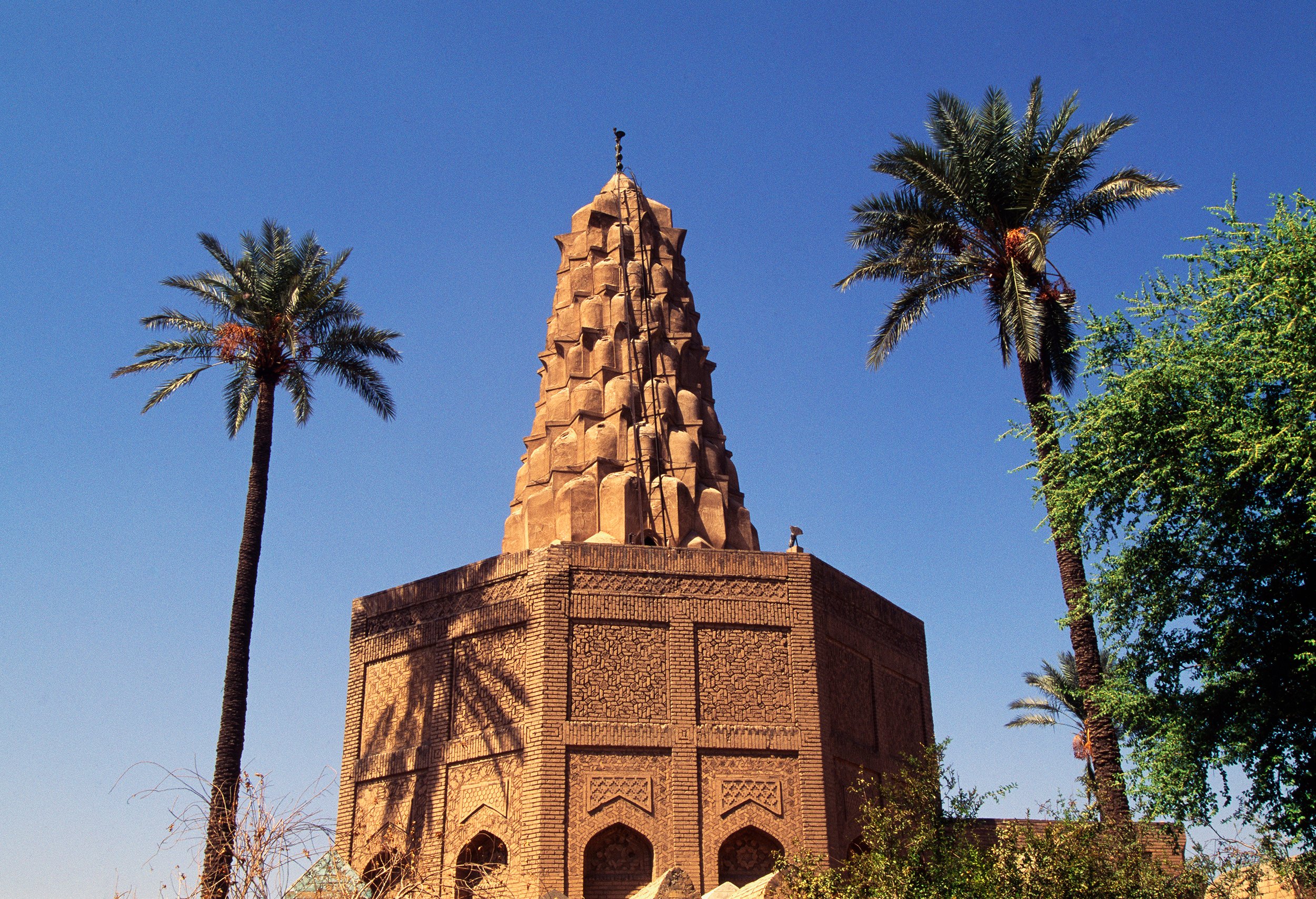
Iraqi heritage advocates have roundly criticized restoration work on the Zumurrud Khatun Mosque and Mausoleum in central Baghdad.
The early 13th-century mosque boasts the oldest remaining minaret in the Iraqi capital and has been under threat for decades on account of neglect, sanctions, and damage endured during the U.S. invasion of the country.
Now, the brick minaret, which is located inside the Sheikh Ma’ruf cemetery, has been covered in white plaster, seemingly in an attempt to protect the structure.
“This messes with the heritage of Iraq,” Yasir Mutlag Aljibury, a Baghdad heritage activist wrote on social media. “This is considered one of the rarest examples of Islamic architecture from the Abbasic Caliphate era… it’s actually a farce.”
The mosque along with its mausoleum were built at the patronage of Sayyida Zumurrud Khatun, a formerly enslaved Turkish woman who rose to become the wife of the Abbasid Caliph al-Mustadhi bi-Amirallah. Together with her son Al-Nasir, Zumurrud Khatun championed architectural works across the city including a madrassa and cisterns. She was buried in her own mausoleum in 1203.
Long a favored pilgrimage site for Sufis from around the world, the building is a rare example of architecture from the Seljuk era in Baghdad, a product of the Seljuk Turks who emerged from the Central Asian plateau in the 11th century to conquer much of the region. The mosque features a nine-layered conical roof and the interior displays brilliant honeycombed vaulting.
In addition to years of being chronically underfunded, U.S. soldiers damaged the tower further following the 2003 invasion by smashing down the 200-year-old doors and using the structure as a vantage point to surveil the city.
Interior of the dome of Sitt Zumurrud Khatun’s Tomb, Baghdad, Iraq. Photo: DeAgostini/Getty Images.
The latest threat to the Zumurrud Khatun Mosque and Mausoleum is a new highway, complete with a bridge, which is part of the Iraqi prime minister Mohammed Shia’ Al Sudani’s plans to upgrade the capital’s transport infrastructure. Although structural damage dealt to the tower by the initial highway excavation has been repaired, it’s feared the completion of the highway will further damage the tower, as well as its general atmosphere.
“It doesn’t look like a heritage site anymore, it looks brand new,” the heritage activist Dhikra Sarsam, a founder of the Burjbabel initiative, told The Art Newspaper. “The government was looking for the easiest and cheapest way. They didn’t want to buy adjacent land as a buffer zone. They could have done it differently.”